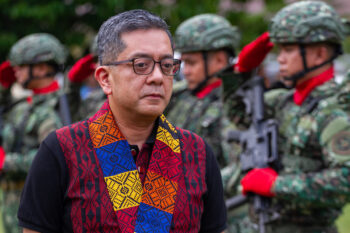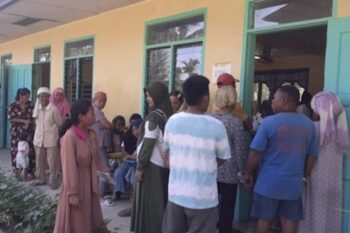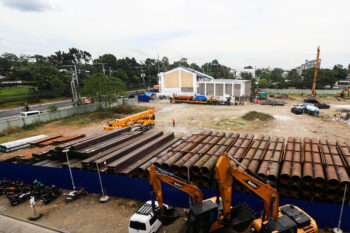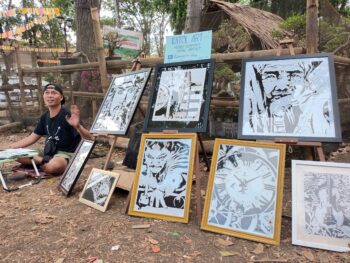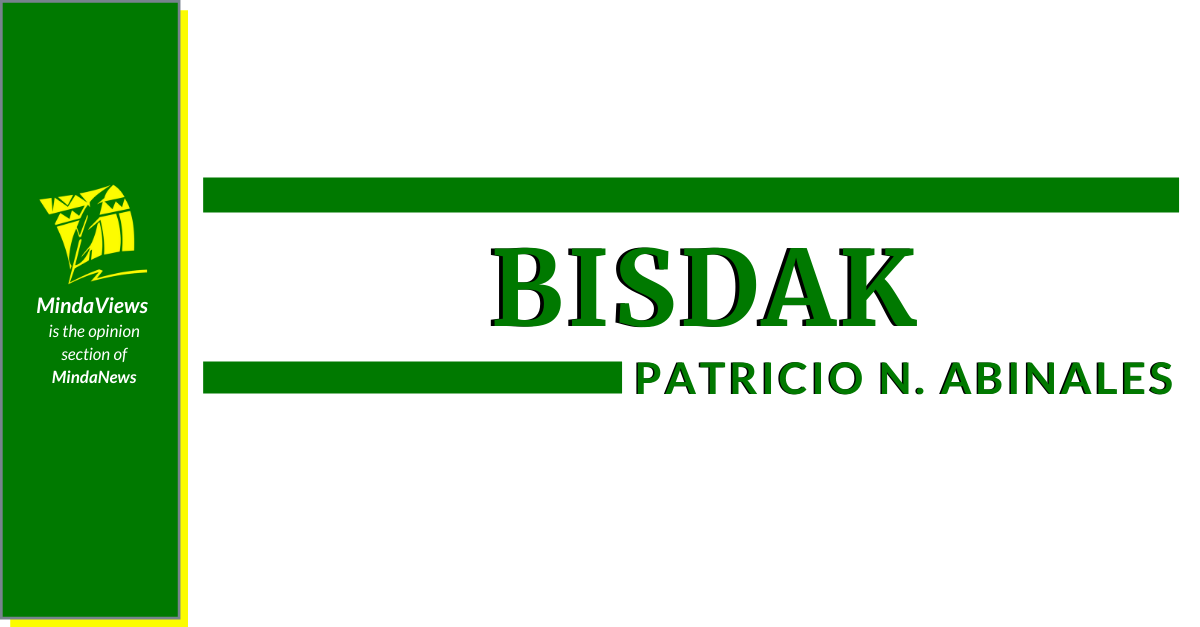
HONOLULU (MindaNews / 14 November) — What would Philippine history look like if one were a Moro woman standing in Tawi-Tawi, sorting out smuggled iPhones and Blackberries from China via Borneo, eagerly awaiting the money her daughter working in Saudi Arabia will send her, and having never formally gone beyond third grade? The reason for this difficulty is quite straightforward: there is a very little positive connection between the center and the periphery. Manila – since the Spanish colonial period – had been sending military units to subdue Mindanao; supported corporate expansion aimed at exploiting the island’s resources; crafted its migration policies aimed at filling up the frontier with settlers at the expense of Muslims and non-Muslims (the lumad). The only constructive ties are exploitative in nature – these are based on the patronage-driven mutual accommodation local leaders (Muslims and others) have had with colonial and national state leaders.
It is this disjuncture in Mindanao and Manila histories that help explain the armed separatist rebellions of the 1970s by the Moro National Liberation Front (MNLF), and the continued existence of its rival and successor, the Moro Islamic Liberation Front (MILF) in the southern Philippines. But it is also because of the way these conflicts invoke this disjuncture that a different kind of narrative about Mindanao’s relations with the nation-state that has become the official and popular explanation of the war.
Much has already been written of the escalating conflict that broke out once the frontier filled up and local elites being marginalized by national state actors. What is notable is how it is explained and glorified. First, there is the idea of a 1,000 year Moro resistance against Spanish, American and Filipino colonialism which Professor Casino has raised doubts upon. And second is the notion that the Bangsamoro Republik’s pedigree is older than the colonial or nation-states, when in fact – very much like Indonesia – it is a geo-body constructed and imagined under colonial rule. The MNLF’s and the MILF’s separatist agenda are therefore premised on “breaking away” from the nation-state.
This is odd because if you want to trace Moro resistance back to 1,000 years ago, or argue that a “Moro civilization” had with a longer history than the colonial state, then the only way we should look at Muslim Mindanao, is by turning our backs on Manila and look at Sabah, to what is now peninsular Malaysia (and perhaps Vietnam) then up to Fujian, Kunming and even Shanghai. Imagine looking at Mindanao history this way and you will notice a broader perspective. And in the case of the separatist war, looking at Mindanao’s connections this way enables scholars to open several new threads that have – so far – been unexplored, prominently the insurgents’ connections with Malaysia, Indonesia to Afghanistan, Pakistan, and Libya. Beyond separatism, this grid enables us to regard Mindanao as a center among many centers instead of treating it as a periphery of the nation state.
Scholars and Smugglers
What will this shift offer us? Foremost, it brings back Mindanao, and even the Philippines to its “original” Southeast Asian setting, correcting not only the binary Mindanao-Manila linkages, but also the “larger” binary Philippines-United States, nation-empire connections. This perspective “resurrects” the pre-colonial connections that had been pushed underground by colonial powers, connections that never disappeared. This multi-grid approach to Mindanao studies brings to the fore the resilience of these ties that historians of pre-colonial Southeast Asia write about. The young scholar Josuah Gedacht completed his dissertation at the University of Wisconsin-Madison titled “Islamic-Imperial Encounters: Colonial Enclosure and Muslim Cosmopolitans in Island Southeast Asia, 1800-1940.” Joshua compares how different connections led to the remaking of Islamic networks amidst the colonial wars in Sumatra and Mindanao. Studies like Joshua’s are the only way in which we can appreciate the history and transformation of one of the major historical currents in the Philippines – Islam – because it set on a comparative setting within the Southeast Asian region. Studying Islam from a Manila-Mindanao relationship would not cut this; in fact, it would be simplistic.
This “other side of globalization” also redefines and repositions roles. The smuggler moving comfortably around this world is now the central player, not the government official, the corporate executive, and even the NGO activist. Her sense of place and its boundaries are far different from that of the nation-states. The former’s realm cuts across several nation-states and covers much of entire roughly consist of maritime Southeast Asia, central-eastern China, and even Japan. The nation-state has a narrower territory of which the smuggler’s domain is seen as the farthest, the most backward, hostile, and difficult to control.
In their spheres, smugglers trade in different kinds of commodities without questioning if these were illegal or not. It is a commerce that the nation-state sees as contrary to law because it is untaxed, unsupervised, and most likely compete with locally produced, legal, and taxed goods. The smuggler’s world, in short, is subversive of the national geo-body. It is also a world that has a longer history than that of the nation (which is, in turn, based on a colonial cartographic invention). The loyalties of the communities that belong to this realm are thus older and more robust fidelities than that of the narrower sense of citizenship. Part of the power of this outlook is its ability to incorporate citizenship when situations warrant that they do so. How significant is this smuggler’s world? Consider these figures that the Philippine Star reported on February 4, 2014, that in the last five decades, the Philippine economy “was cheated of $132.9 billion or P6 trillion in illicit money outflows …incurring losses of over P357 billion yearly on average.”
The Problem of Nationalist History
Can the national narrative deal with these communities whose worldviews and everyday life do not cohere to what the nation-state expects of its citizen? How would today’s nation-centric Philippine Studies address this issue of a national frontier that is more cosmopolitan because it is regional? It has no choice but to make this reorientation. The obvious reasons are the numbers. There are more Filipinos going or working abroad, and this time not just in traditional places like the United States. In fact, as of 2011, those living permanently, temporarily, or illegally (“irregularly”) in Asia (from East to West) now equal those based in the United States (4,347,296 are in Asia while there are 4,326,059 in the United States).
The same goes with countries hosting over 100,000 Filipinos: those living in Asia now constitute 43% of the total number. Finally, the same substantial percentage can be seen among those illegally staying in these countries are hiding in Asia. I suspect that the dramatic increase of Filipino-American scholars is motivated by these 4.3 million diasporas. It is time also to do so with the Filipino diaspora in Asia, albeit this will be more challenging given their distribution and the contrasts of the societies they live in (On a side note, scholars working on gender will note that most overseas Filipino workers from Mindanao are female, working in Malaysia and the Gulf countries – one reason being Mecca is more accessible from, say, Bahrain – and among illegals living aboard, 10% of them are in Sabah).
Doing so, however, also demands of the scholar to be multi-lingual simply because their subjects are polyglots. The Mindanao-based smuggler, for example, has no problem switching languages and even identities in a trading zone where being multi-lingual is the norm. In the small islands of the Sulu archipelago, it is said that for most of the year the families regard themselves as Malaysians, speaking in Bahasa Malaya, Bisayan, Tausug, reasonably fluent in Mandarin, Cantonese and Hokkien, and maybe some Malaysian-English. On one day a year, they become formally Filipinos, and that is when they must vote in local or national elections. After leaving the polls, they revert to their “old Malaysian selves.” Now contrast this to the people in the “center”: familiar with two of the national languages: their language of birth (Tagalog, Bisayan, Ilonggo, Ilocano) and the language for social mobility (English). Unless they migrate to the United States or elsewhere, these metropolitans could not imagine themselves switching identities.
Turning the Centers into Promdis
The scholars on border studies, Willem Van Schendel and Itty Abraham argue that this is not a black-and-white affair but an activity where, as their volume Illicit Flows and Criminal Things: States, Borders, and the Other Side of Globalization notes where the boundaries “between the illegal (prohibited by law) and the illicit (socially perceived as unacceptable)…are historically changeable and contested.” There is still no academic answer to the question, “how much profit does a gun, dope and textile smuggler earn every time he makes a Sabah-to-Sulu-to-Bohol run?” Neither am I aware of any study that lays out a smuggler’s budget or a “revenue versus cost” statement. We are therefore in this odd predicament where aggregate incomes are given but the breakdown of those figures sadly lack thereby keeping the mechanics of illicit trading out of a political economist’s spyglass.
Regionalizing (or Asianizing?) Mindanao studies likewise opens opportunities for the kind of comparison that Alfred W. McCoy’s Colonial Policing has done where he showed how important a laboratory and model the Philippines was to efforts at building the American domestic surveillance machine at the turn of the 20th century. However, I think by centering the frontier and the region instead of the capital and the nation, we can also explore Philippine-American comparisons at a, as it were, lower level. For example, if we disaggregate the United States into each state we could come up with interesting findings on race and poverty in Mississippi and a similar plight in the Autonomous Region of Muslim Mindanao; machine politics in Chicago and well, today’s Makati under the Binay clan; single-issue non-profit organizations in San Francisco and non-government organizations in Manila; the rule of families (Clintons, Bush; Aquinos, Marcoses, Macapagal Arroyos) in both countries national leaderships. Of course, there is corruption.
To put it curtly: such a cosmopolitan perspective enables us to make the United States look like any other promdi.
That localization also enables us to get away from the simplistic notion of “empire” (or “imperialism”). The “empire” in Mindanao, for example, has created a lot of puzzles that the latter have never been or refused to engage: the over 60% Muslim support for the presence of American troops in or near the war zones; the 15-year uninterrupted success of the United States Agency for International Development in the same war zones; and the pro-American position of the two “revolutionary” organizations – the Moro National Liberation Front and its successor-rival the Moro Islamic Liberation Front. And as Michael Hawkin’s Making Moros: Imperial Historicism and American Military Rule in the Philippines’ Muslim South (2012) shows, this pro-imperial sentiment has a history different from the nation-state. These are phenomena that scholars looking at this problem of “empire” from, as it were, “afar” (i.e., Manila, Berkeley) are unable to examine, much more explain to their readers and students. But that Moro woman standing in Tawi-Tawi and looking northward could.
The Nationalist (Read: Manila) Dilemma
The question however is this: can using this perspective to incorporate the region to the national frame be possible without the latter unraveling? Perhaps because there exist several counterweights, other than state coercion, that prevent these fissures from worsening. For one, like it or not, the geo-body’s territoriality is already there, with its sovereignty and legitimacy recognized by the international system of similar nation-states. Second, the number of Filipinos who believe in the current version of the national narrative is greater than those who do not (or are unfamiliar of it). This is just a hunch, but if the major polling organization runs the question “What are you first? Filipino or _____”, most will answer the former. Third, there have been historical conjunctures where regional and linguistic divisions were second best to national identity.
Several of the uprisings outside of Manila in 1896-98 were led by local leaders who also considered themselves part of the revolutionary government under Emilio Aguinaldo. This was true with the Cagayan mestizo Nicolas Capistrano; it was also the case of the 120 Cebuano “elites” who led the revolution in the central Visayas island in 1896 as explained in Michael Cullinane’s new book Arenas of Conspiracy and Rebellion in the Late Nineteenth Century Philippines (2014). With memories of that struggle for independence kept alive in history books, the challenge would be how to reinvigorate these.
Finally, the country’s internal wars have ironically enabled communities, groups, and individuals to talk to each other, and this time in Tagalog. When I interviewed Maguindanaons who were displaced by the MNLF’s war of separatism, I asked them how they dealt with “outsiders,”, i.e., the national army. They answered “Tagalog,” and when asked to explain why, they told me they had to take seriously the learning of “Filipino” (required in elementary and secondary education, but seen as an imposition by non-Tagalog speakers) because that was the only language, which both village and soldier understood. Hearing Galib Andang, a.k.a., Commander Robot, leader of the Sulu faction of the Abu Sayyaf explain the reasons why they were into the kidnapping business in Filipino indicates how the national language has been incorporated in the everyday dealings of Tausugs, and perhaps even the Maranaos.
The war has also created this space where licit and illicit blend with each other: the pirated DVD and pearl markets are notable examples. These fares are first set up by Maranaos, who have migrated up north because of the war, and soon would be followed by relatives and younger kin who would, in turn, expand the network beyond Manila. Later, Muslim migration from the dirt poor Autonomous Region in Muslim Mindanao provinces to the cities in search for jobs have led to the rise of Muslim communities, particularly in the urban poor areas. While they may look to be enclaves within these ghettoes, it was next to impossible not to interact with similar probinsyanos from all over who have also set up their zones.
Today the pirated DVD and the hijab – symbols of Maranao presence – have become parts in the social landscapes of the country’s metropolis. Moreover, it is, ironically from these smugglers that we may just find the social adhesives that will bring about the much-awaited popular birth of the nation.
(MindaViews is the opinion section of MindaNews. Patricio N. Abinales grew up in Ozamiz City and is author of ‘Making Mindanao: Cotabato and Davao in the Formation of the Philippine Nation-State’ (Ateneo, 2020 expanded edition), ‘State and Society in the Philippines’ (2017) and ‘Orthodoxy and History in the Muslim Mindanao Narrative’ (Ateneo 2010). His current research is on the puzzle of American legitimacy in Moro Mindanao and a mapping of war and economic development in Mindanao)

